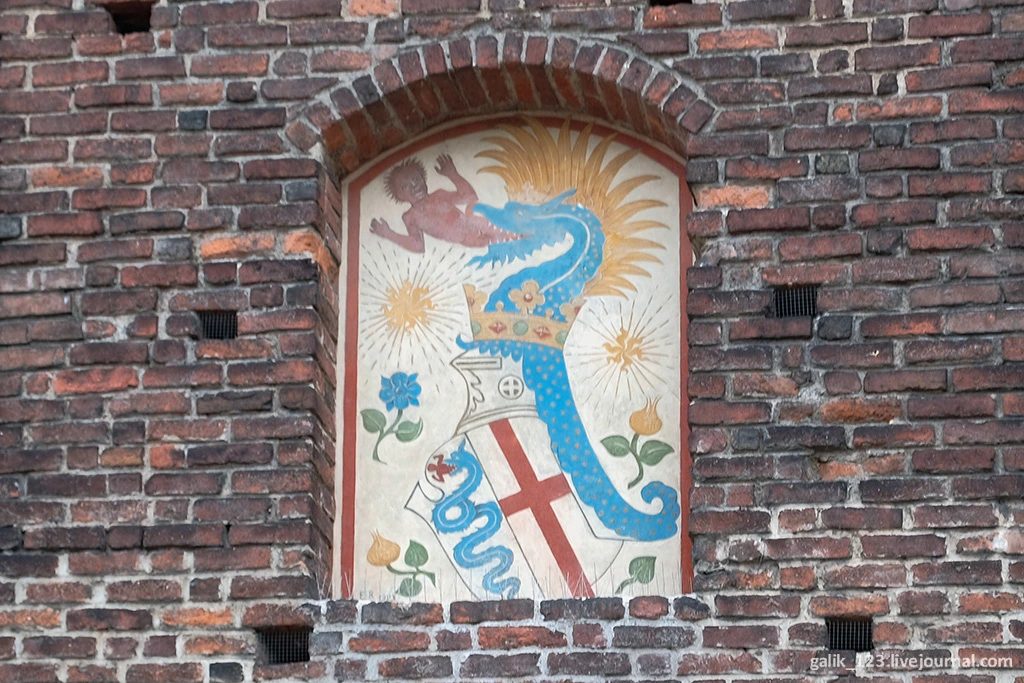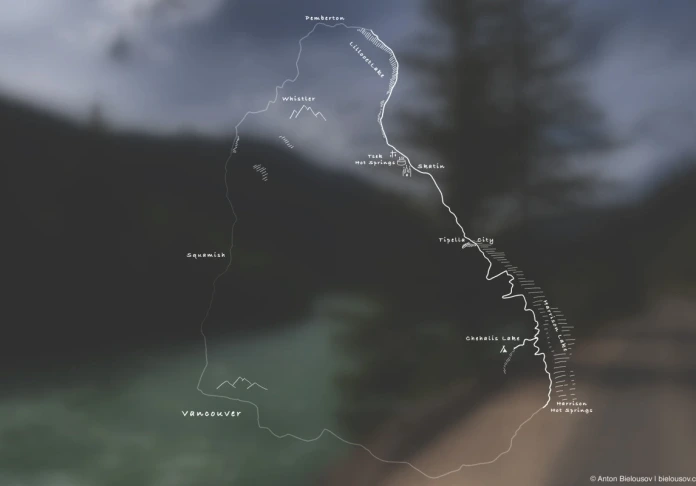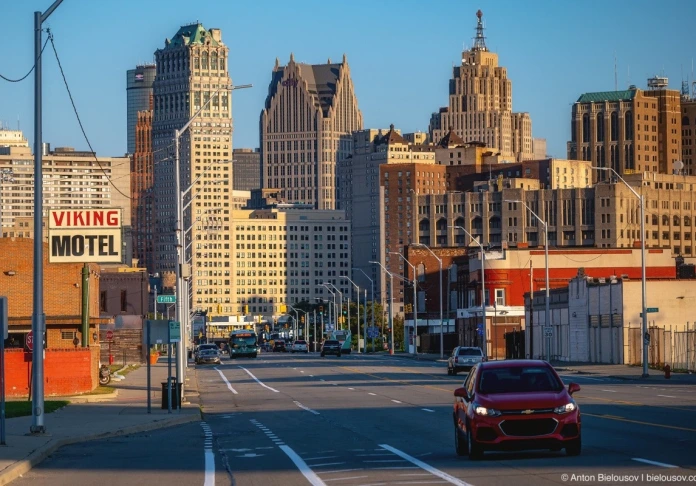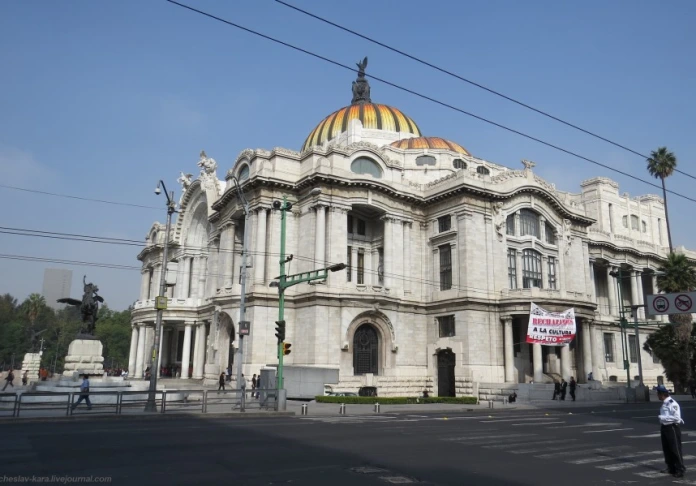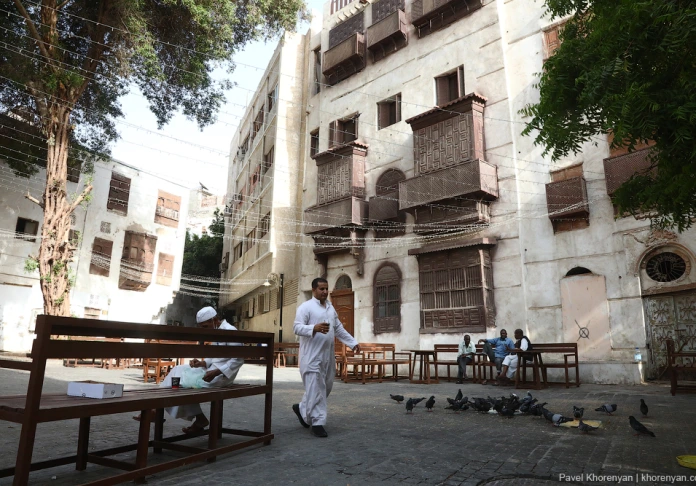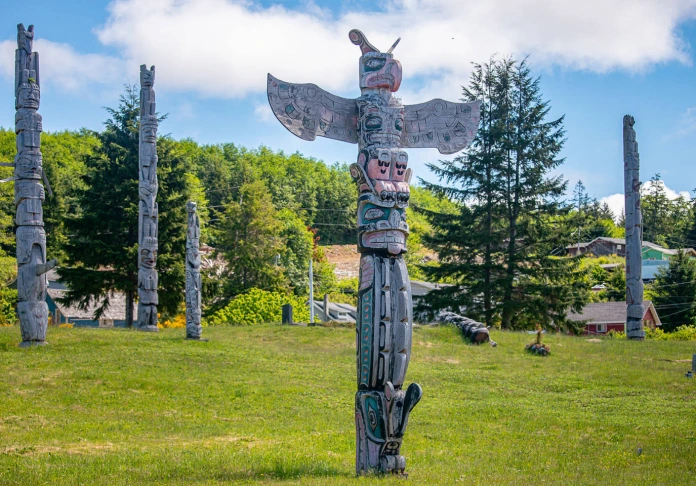Italy
Sforza Castle in Milan
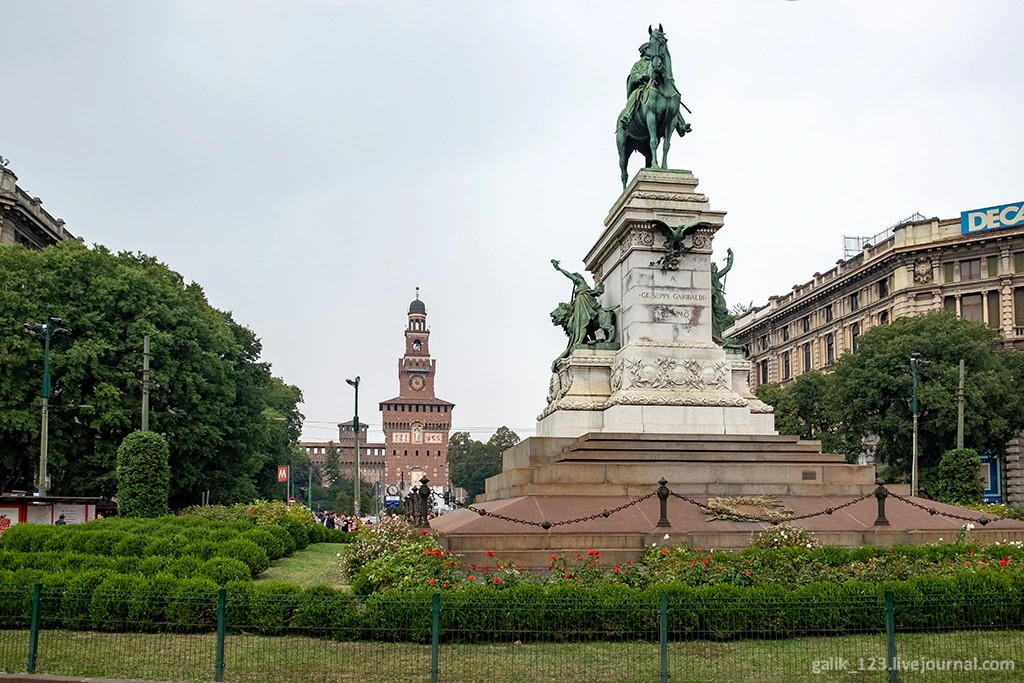
It is believed that the castle of the Dukes of Milan's Sforza - a kind of prototype of the Moscow Kremlin. After the restructuring of the Kremlin in Moscow in the late XV century, led by Italian architects. Sophia Paleologus, wife of Ivan III and niece of the Byzantine emperor, who personally asked Sforza to release the architect Aristotle Fioravanti in Moscow. Sforza castle was rebuilt many times, repeatedly kept the defense from external enemies, and from the Milanese themselves. In 1943, during the bombing of the castle again seriously hurt, but was restored by 1956. In general, he is constantly reborn, like a phoenix. And passion is seething with serious, I do not presume to describe them.
Here are just a few remember the Sforza dynasty. Founder of the Sforza was Muzio Sforza (1369-1423), soldier of fortune from Romagna, nicknamed "Hercules", in Italian Sforza. He could bend a horseshoe and jump into the saddle in full armor. The war he went to fifteen years, joining passing by mercenaries. According to legend, Muzio threw an ax and a wish: if he gets stuck in the tree, then go with the soldiers, if they fall to the ground, then left. Ax stuck. His son Francesco Sforza began to reign with Milan in 1450 and became Duke after the death of his father, the last of a dying kind of Visconti.
Next Sforza - his son Galeazzo Maria Sforza, became famous as a patron of the fine arts, and as a bloodthirsty tyrant. At the age of thirty-two years, he was killed by conspirators in the church of San Stefano. Son Galeazzo Maria Sforza - of Gian Galeazzo, almost no rules on their own, he was poisoned at the age of twenty-five by his uncle and regent of Lodovico Moro.
The most prominent member of the dynasty was Louis Moreau. After the death of his nephew Ludovico Moro managed to get a ducal title, bypassing the direct heirs. But this intrigue did not go in his favor, since the beginning of the Italian wars, and the French conquered Milan, but he was taken prisoner, where he died. Over time, the French were driven out and the Sforza dynasty returned to the throne, but the success was short. With the death of Francesco II Sforza dynasty cut short, and in 1535 Milan became part of the possessions of the Holy Roman Empire.
1. And now simply loop through the territory of the Castello Sforzesco. From the outside, the castle is surrounded by impressive walls and towers. On the central Piazza Castello is traversed castle tower - Tower Filaret. It was built in 1452 the Florentine architect Antonio Averulino, known as Filarete. The tower is a multilayered construction 70 meters. Watch - "pravasudiya sun" symbol of the Visconti family, who began building the castle.
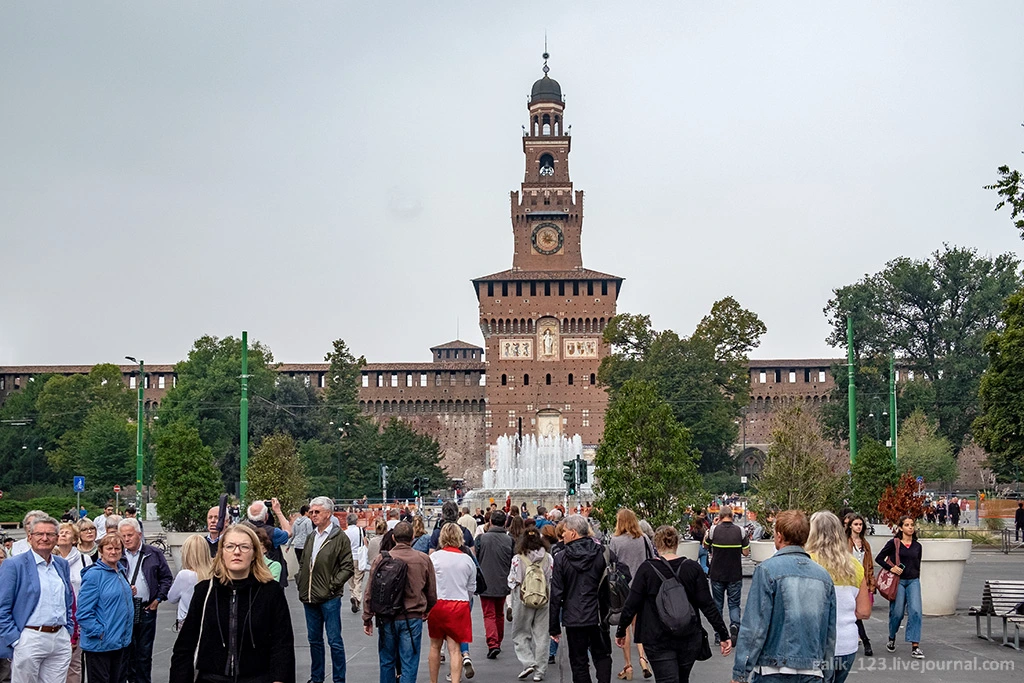
2. Directly below the first gear ornament stands a statue of St. Ambrogio (Ambrose) - Milan patron, between two large coats of arms of Milan's rulers.
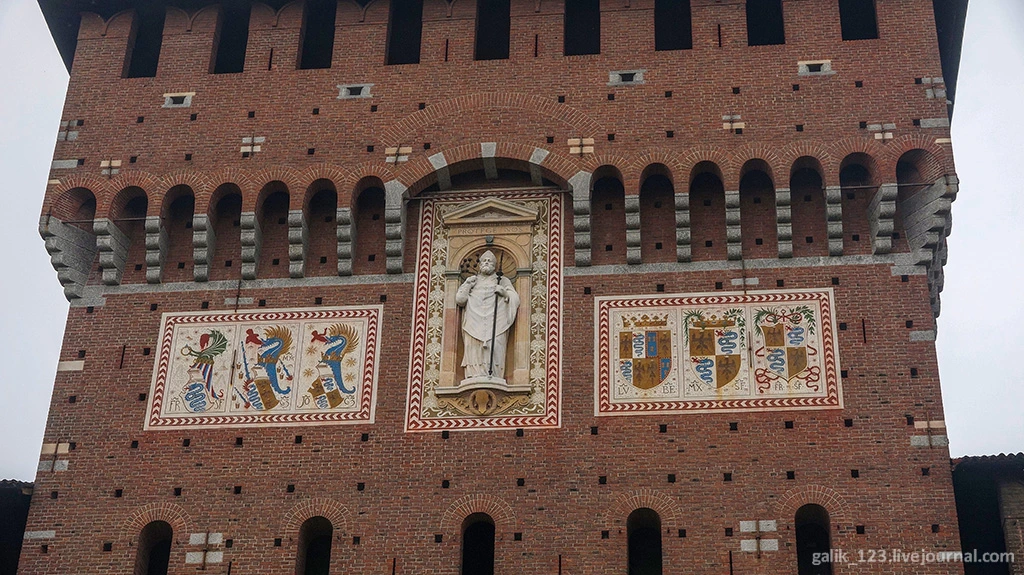
3. On the bas-relief depicts King Umberto I. According to the archives, it is known that the June 23, 1521 lightning struck the tower of the castle Filaret. The tower was used as a warehouse for ammunition, so the tower was almost completely destroyed, but the castle is seriously damaged.

4. In the photo from Italian magazine, can be clearly seen that the castle has two courtyards and a large area.
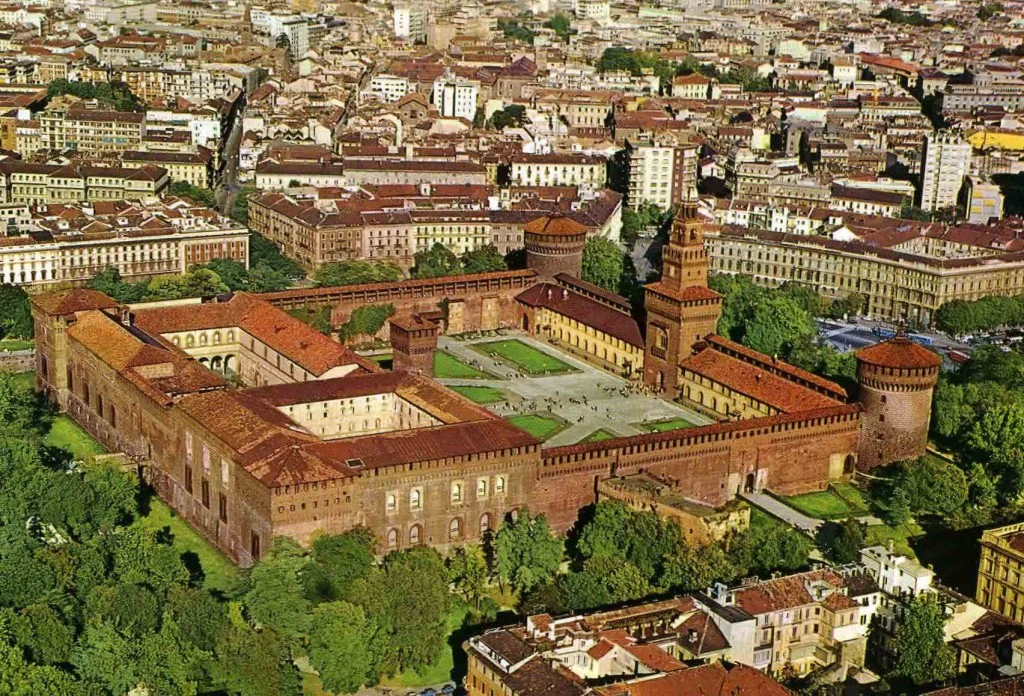
www.milanoreporter.it
5. Before the main entrance to the castle, in Piazza Castello, Castello is a fountain shaped like a cake.
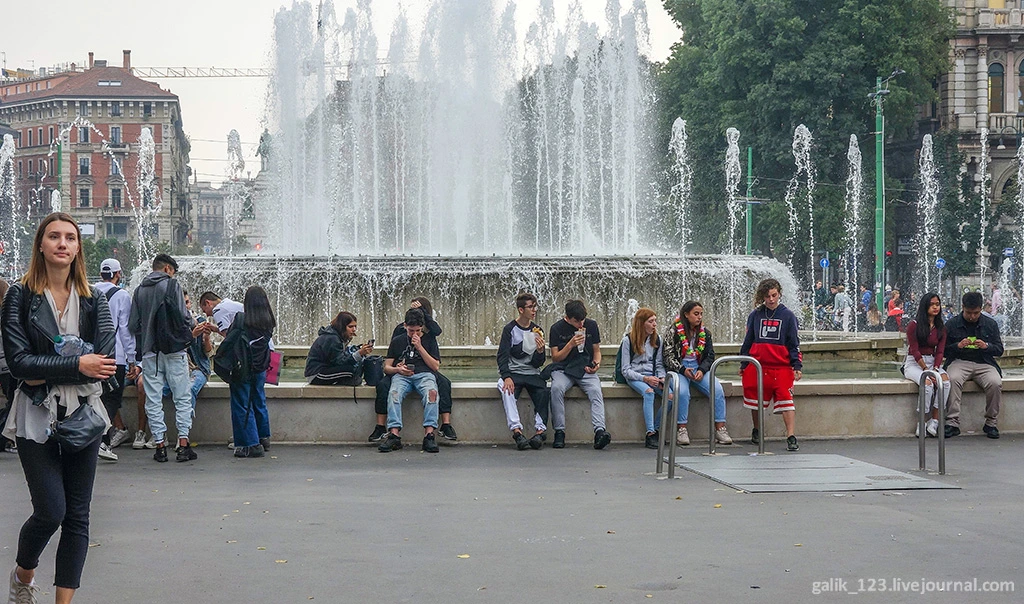
6. The popular name of the fountain - "Wedding Cake".
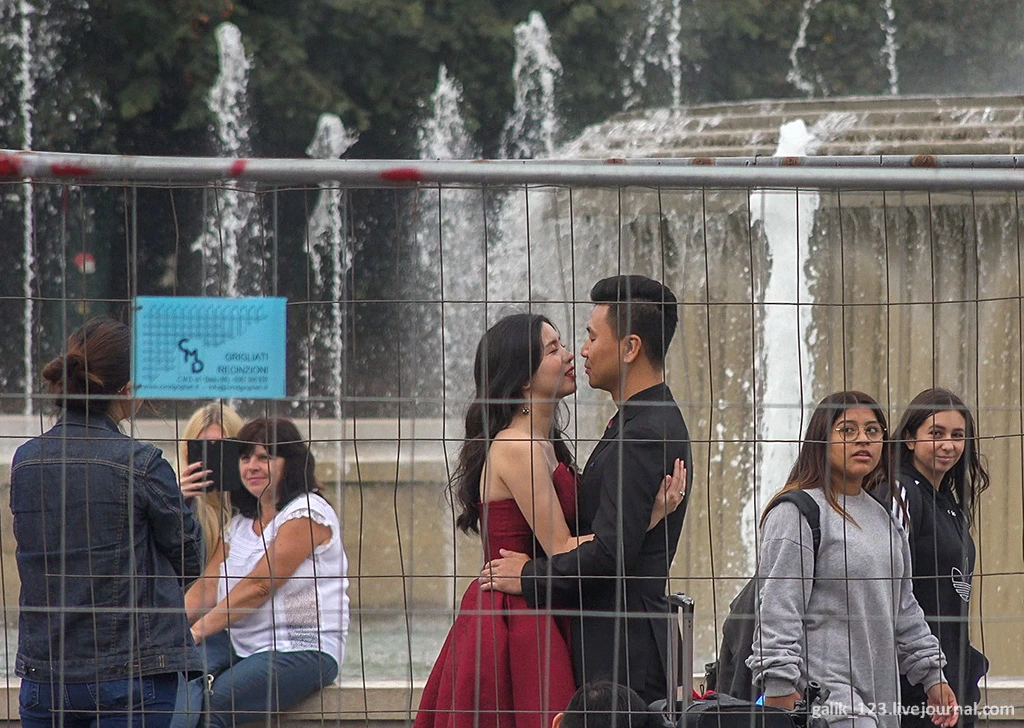
7. In the second half of the XV century to the decoration of the castle was brought Leonardo da Vinci, but from the original frescoes by Leonardo in the ducal chambers is almost gone.
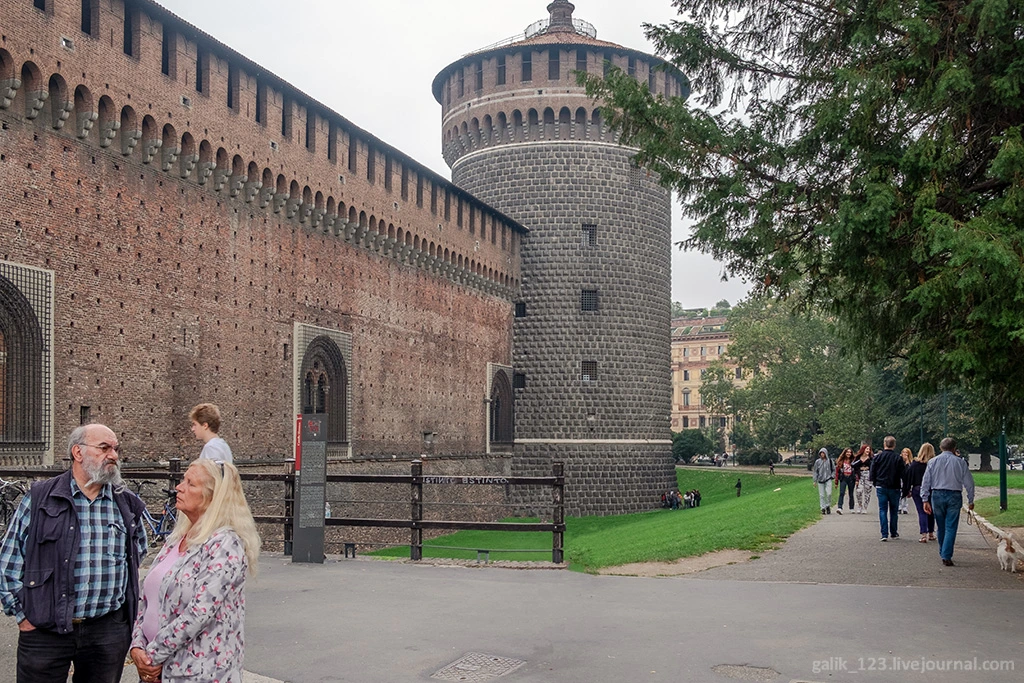
8.
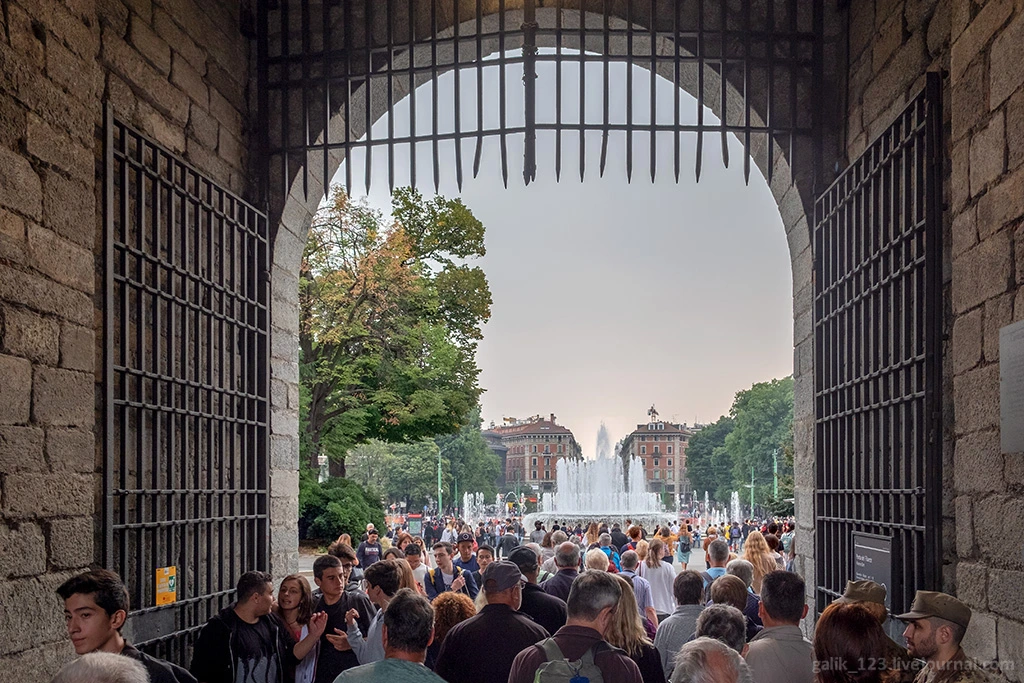
9. If you walk under the main tower, the okazyvaeshsya a large area inside the castle, which served as a springboard. Corner towers were built around 1455 for defense purposes, and also served as a prison.
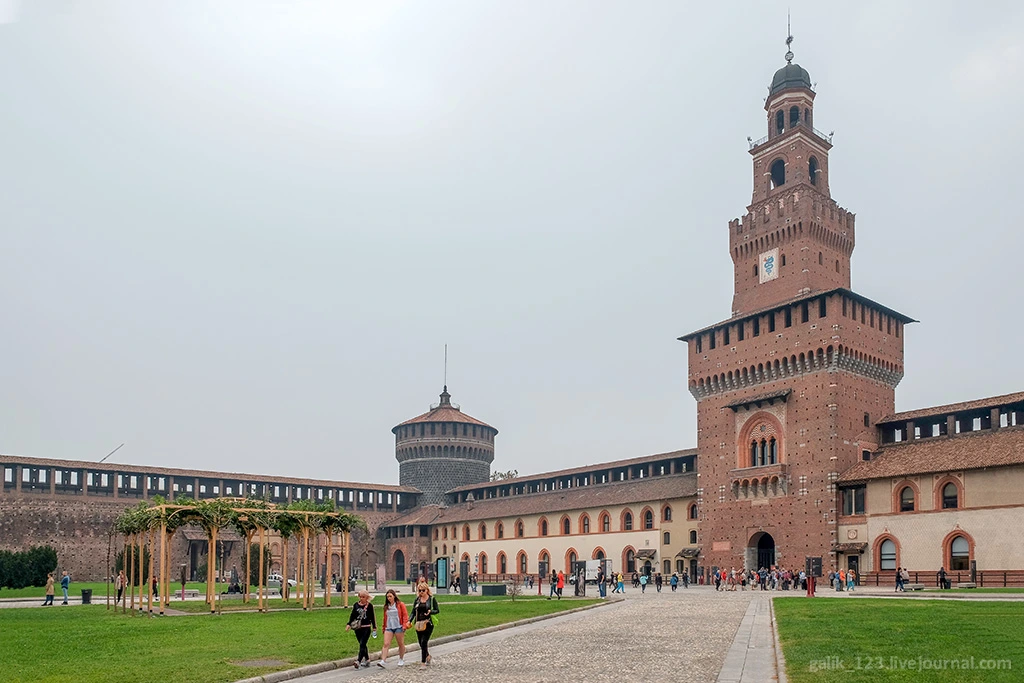
10.

eleven.
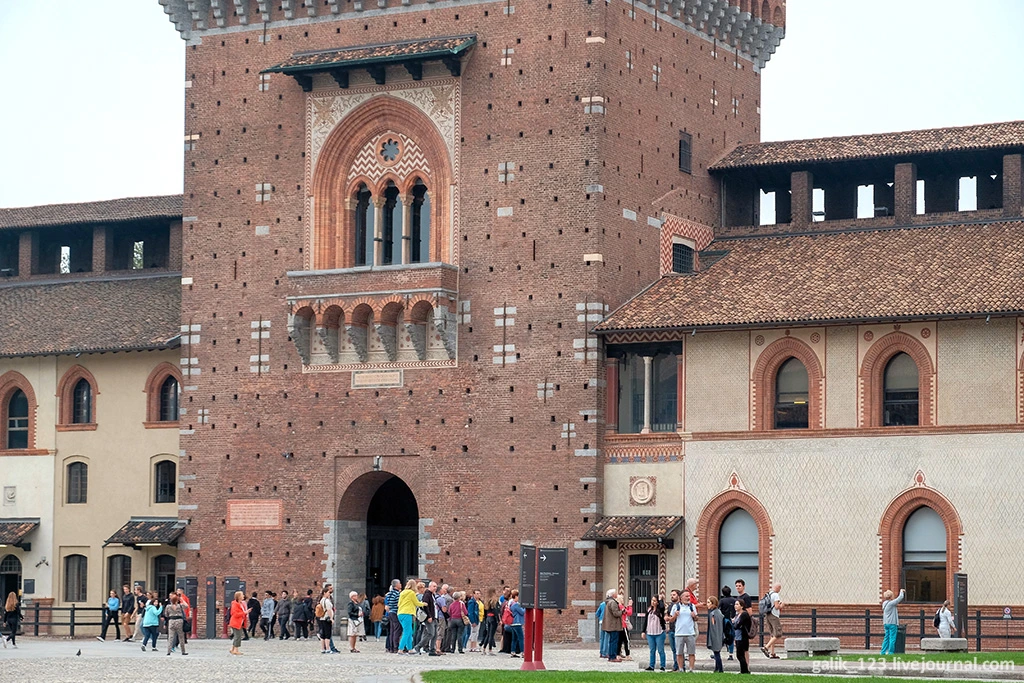
12. The walls of the castle is a museum complex consisting of several libraries and museums related to the history and culture of Milan directly with the Sforza castle.
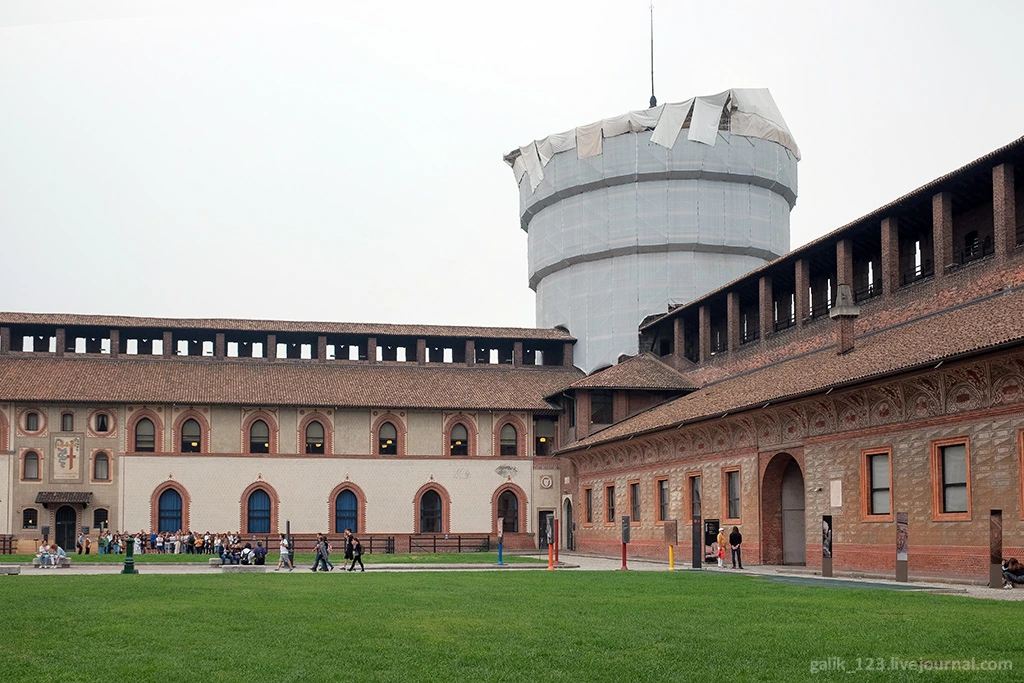
thirteen.
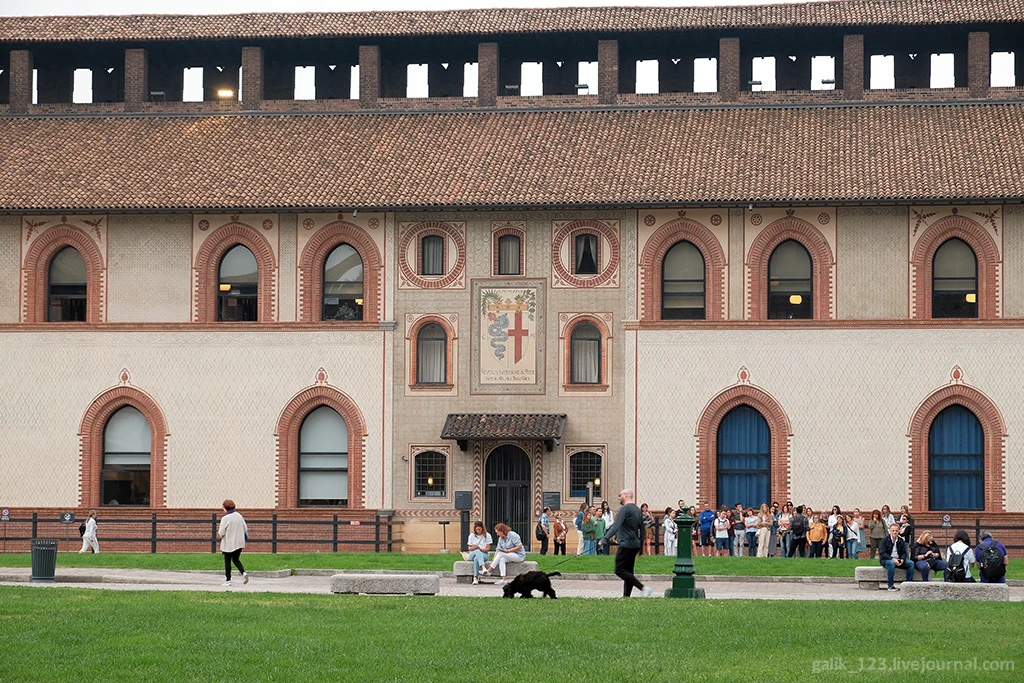
14.
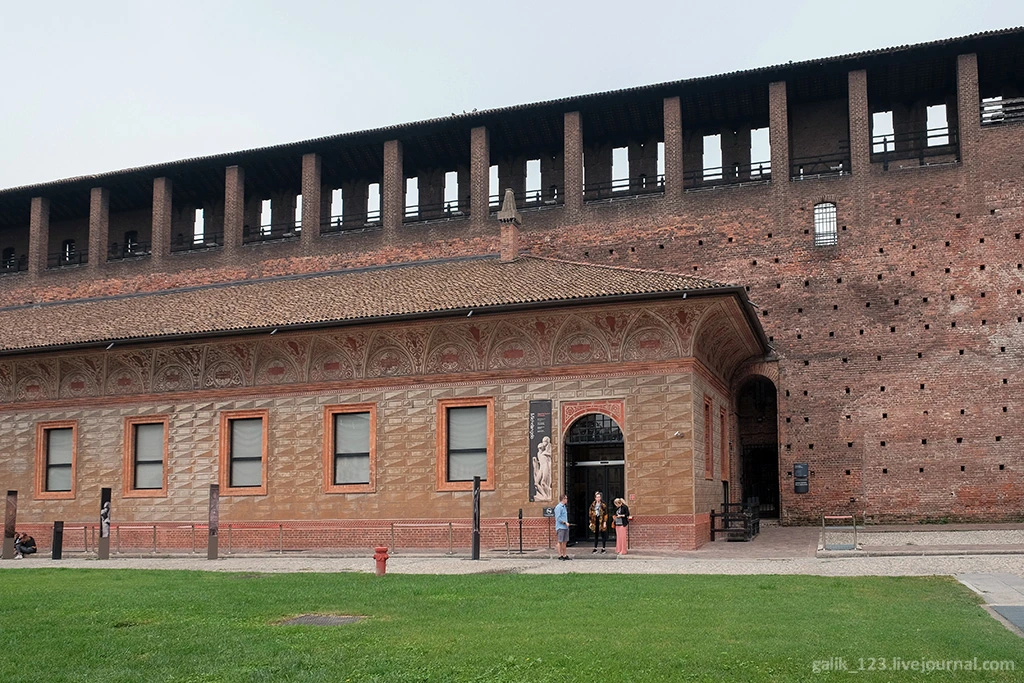
15. Opposite the tower Filaret in 1729 was a monument to the Czech saint John of Nepomuk. In the center of the tower is visible Bona. Galeazzo Maria Sforza was stabbed by the conspirators at the entrance to the Basilica of Saint Stephen December 26, 1476, leaving a widow with four young children. Fearing for his life, his wife, Bona of Savoy has built in the most protected part of the castle - Rocchetta, a high tower. Hence she could watch all the buildings.
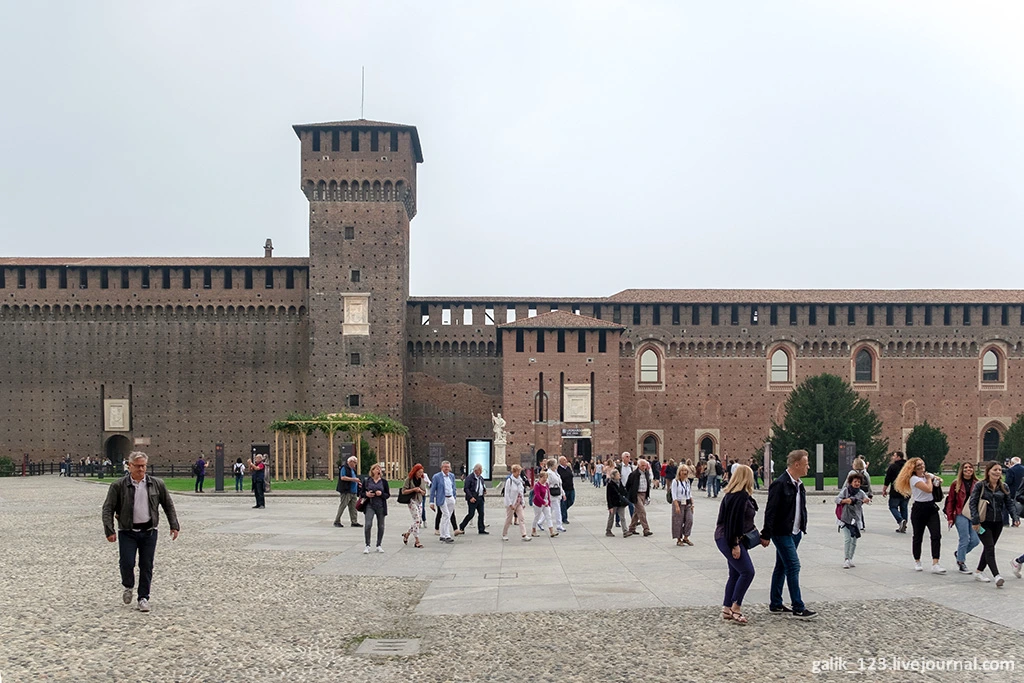
16.
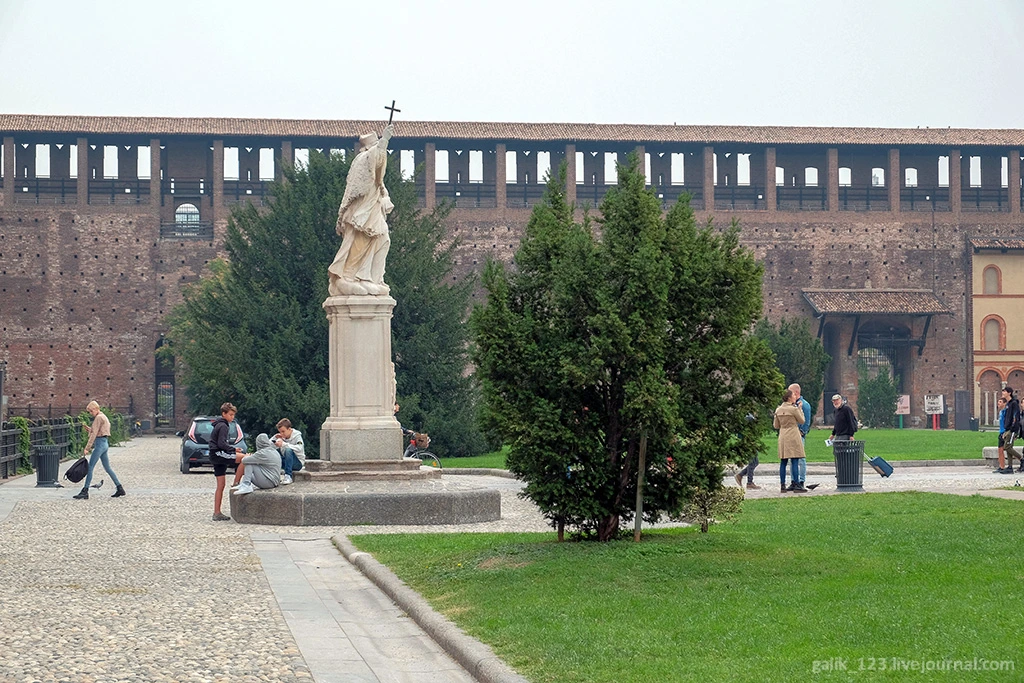
17.
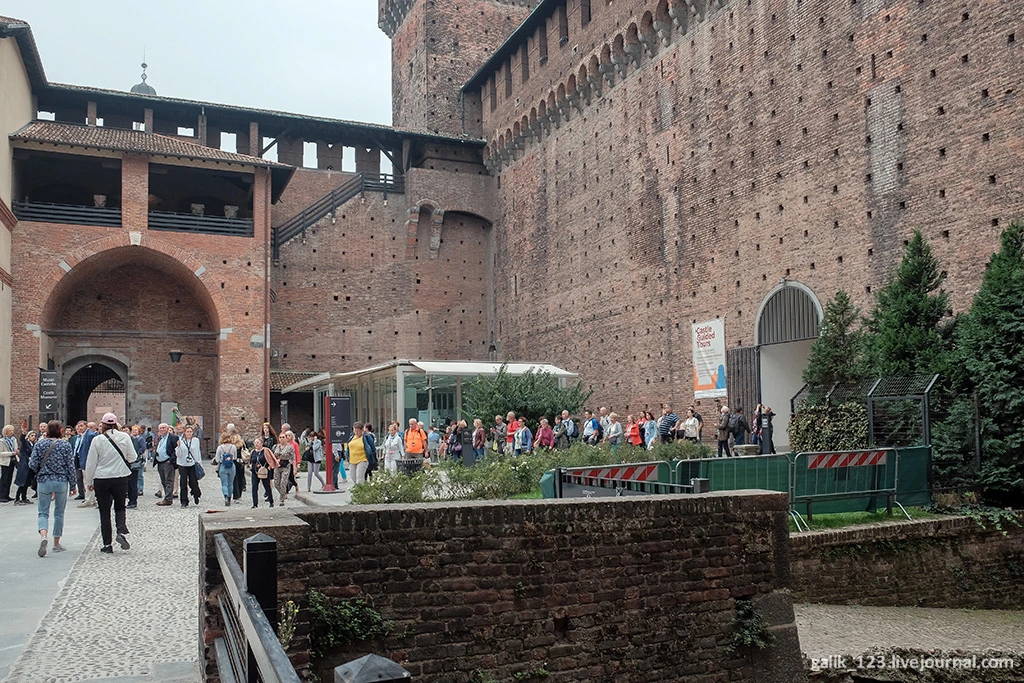
18.
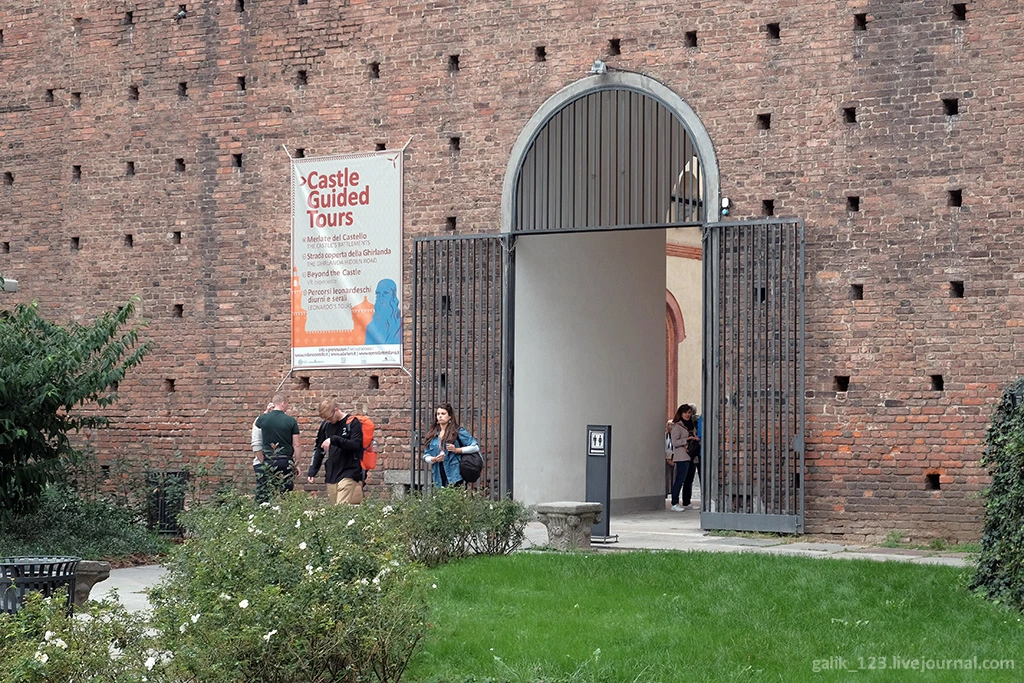
19. The ancient coat of arms belonged to the Duke of Milan before two ducal leave, right to the city - the Visconti and Sforza.
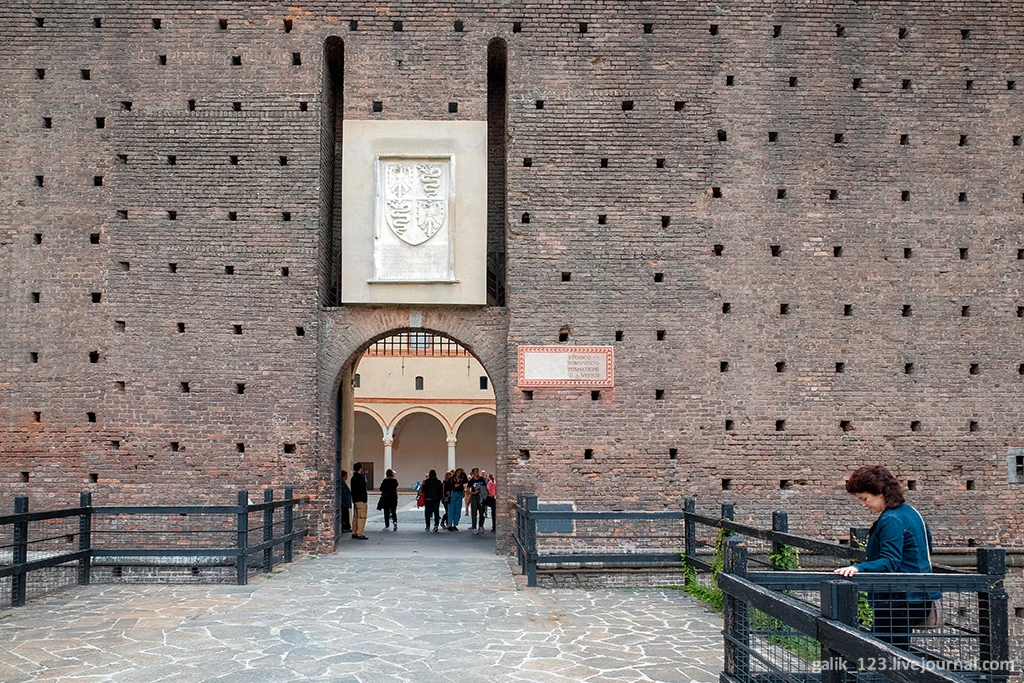
20. Rocchetta - the most inaccessible part of the castle, where you can take shelter in case of attack. Rocchetta consists of a small square courtyard on four sides surrounded by walls. Go to Rocchetta possible from the main courtyard of the castle.
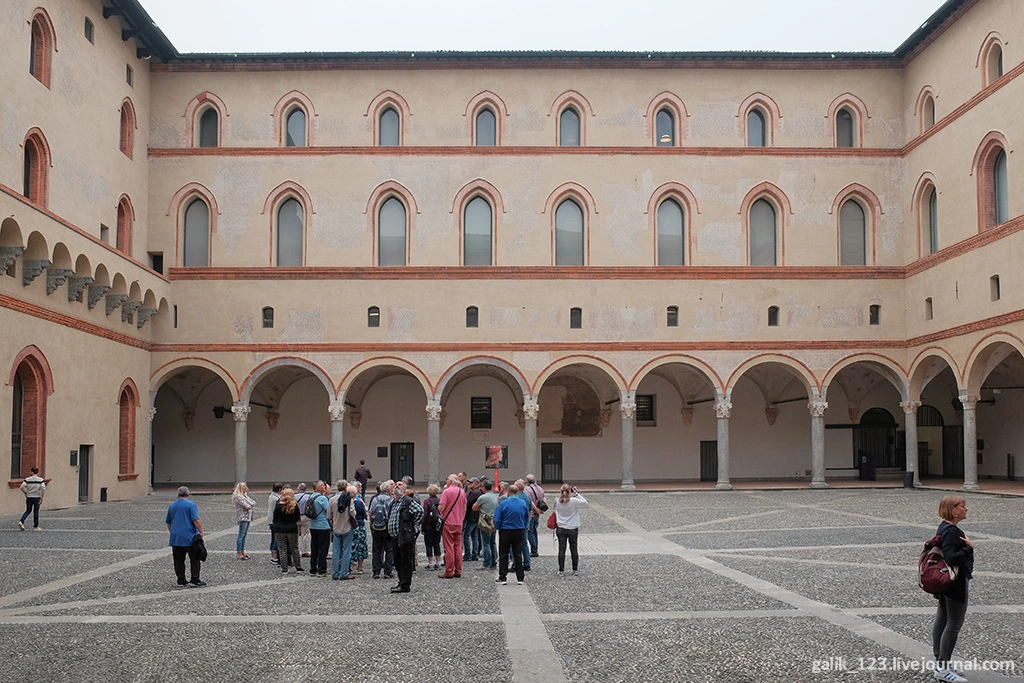
21.
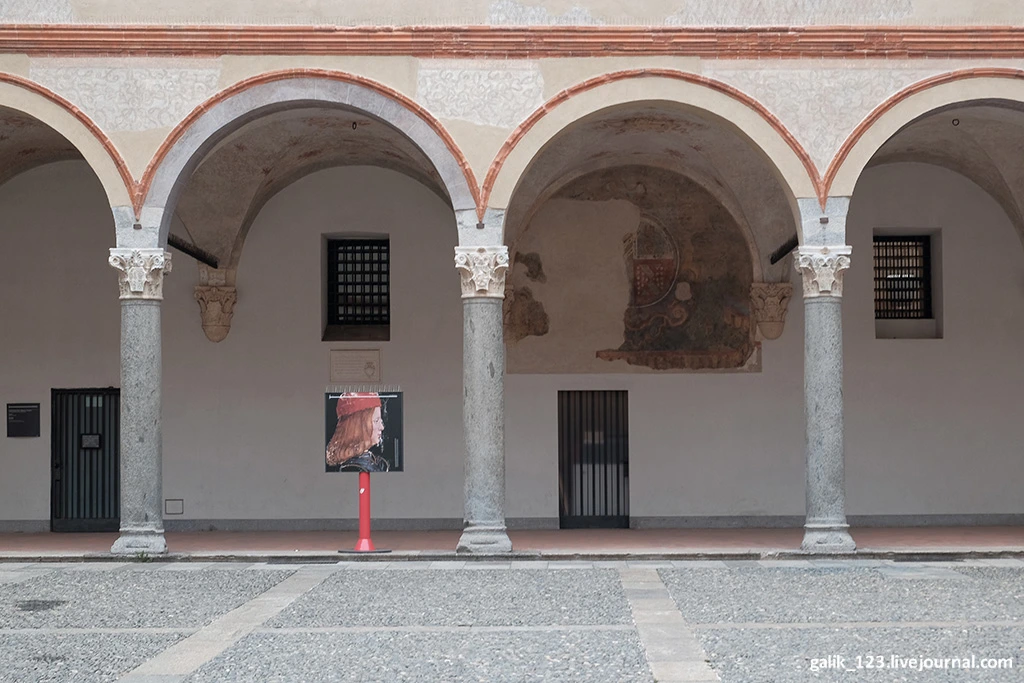
22.
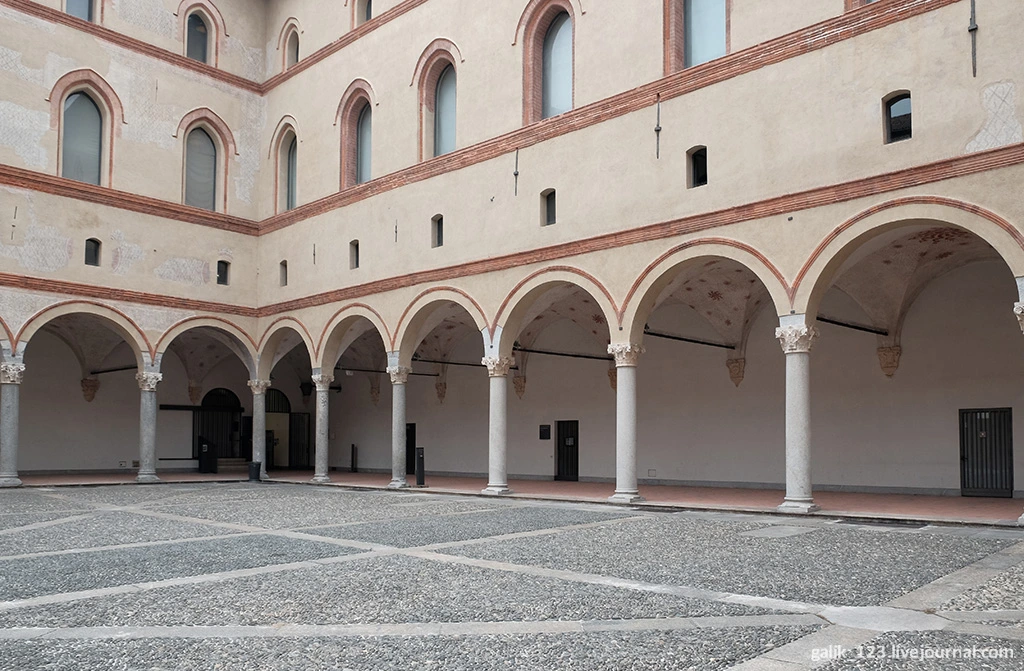
23.
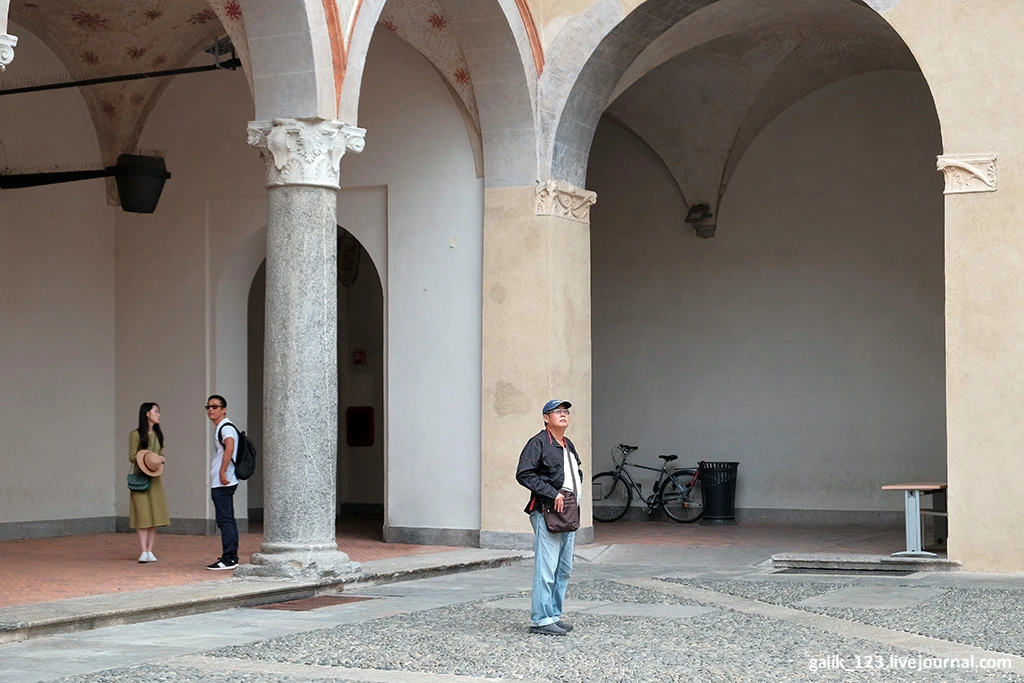
24.
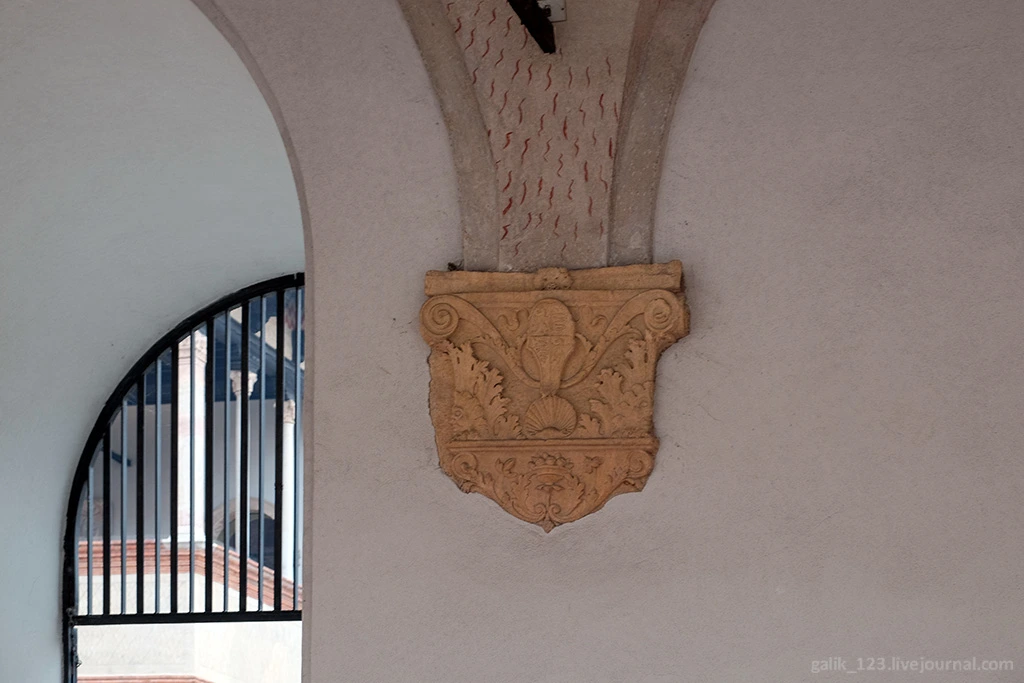
25.
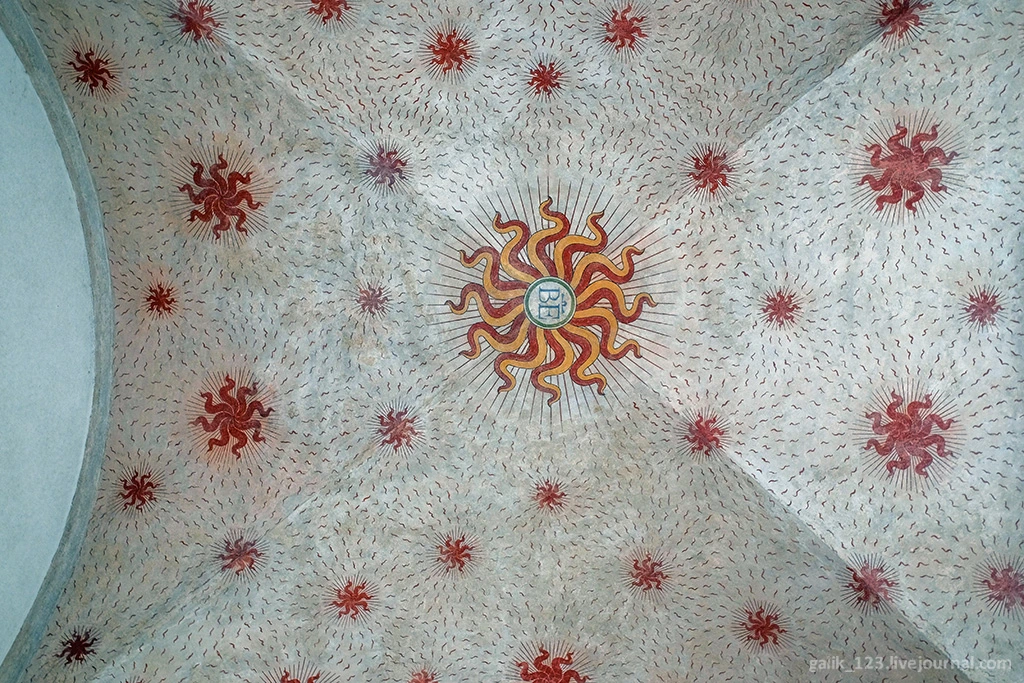
26.
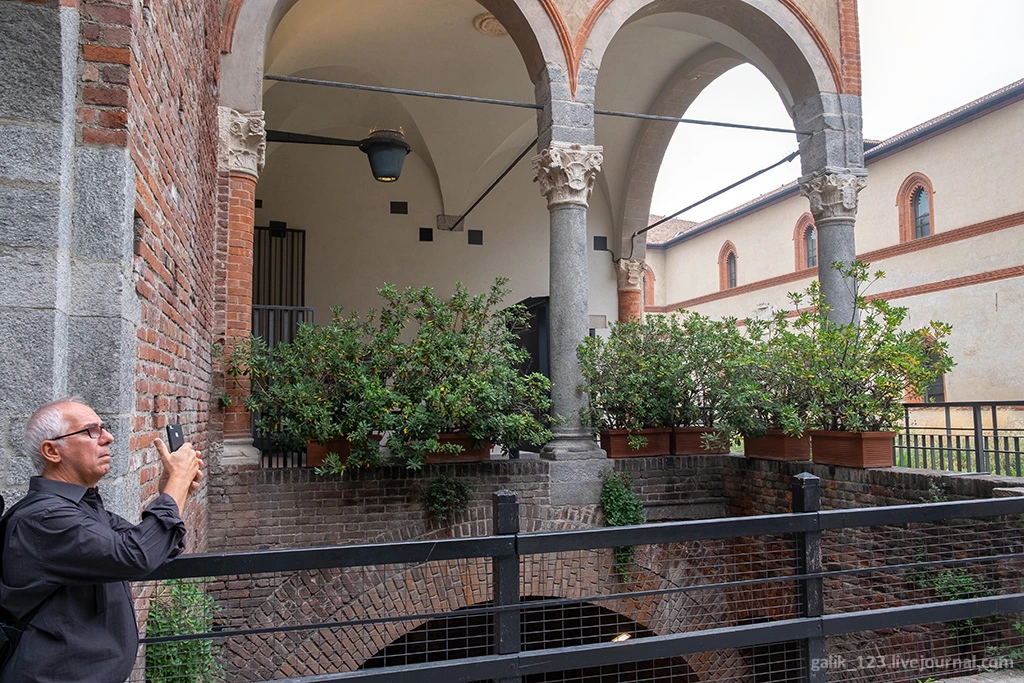
27. Ducal Court - the interior of the castle with a green lawn and a swimming pool. At this point in the Renaissance into apartments of the Dukes and the center of court life. It was built and decorated in the second half of the XV century. Despite the fact that over the next four centuries, the Ducal Court was converted into a barracks, as well as damaged or changed, the restoration of the nineteenth century, restored appearance and decorations of the Renaissance.
The back wall of the court is occupied by the so-called "elephant Portico", supported by stone pillars, where the faded mural depicting exotic animals, including lions and elephants.
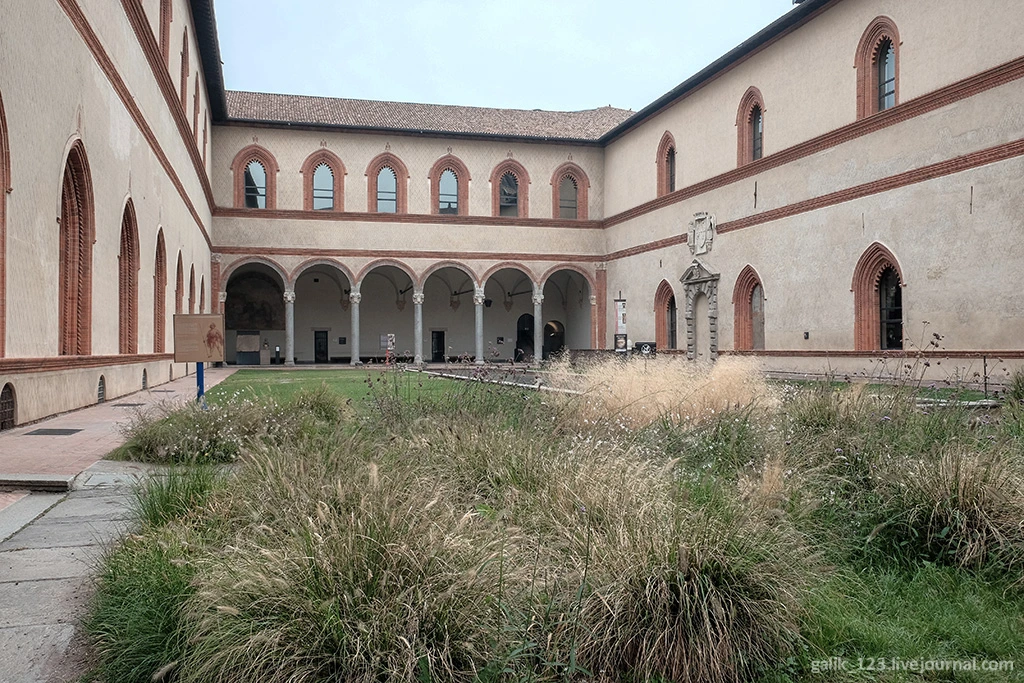
28.
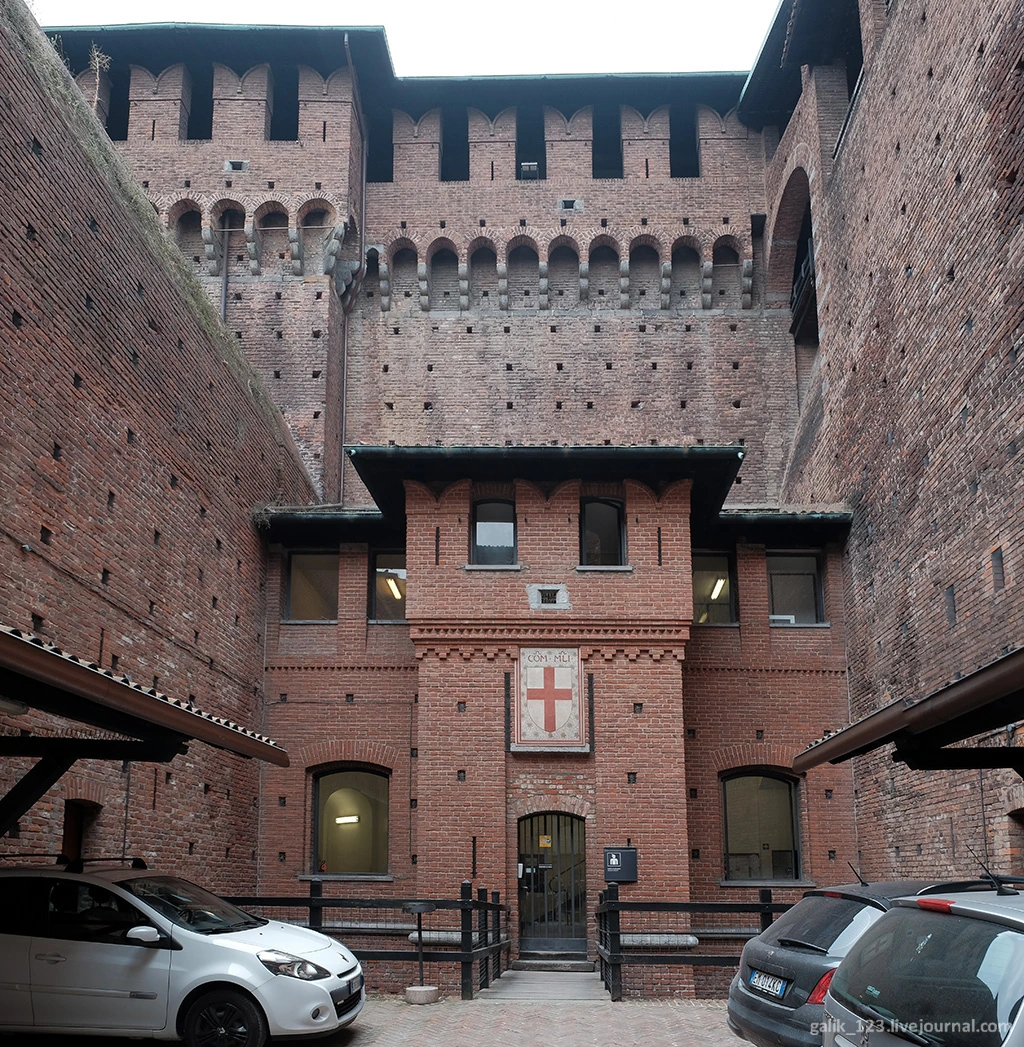
29.

thirty.
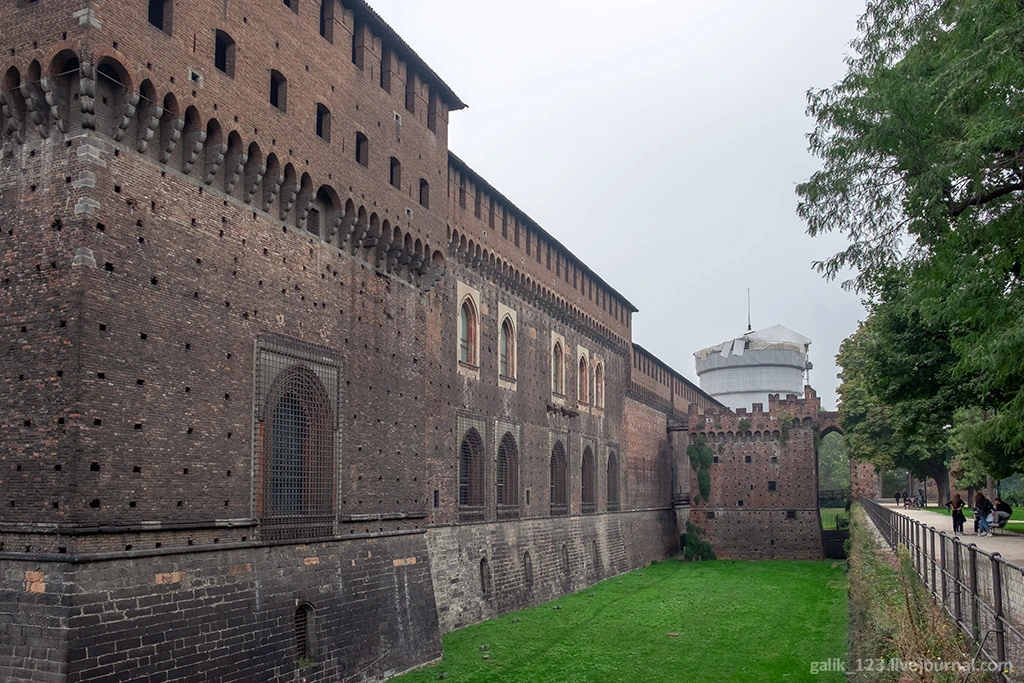
31.
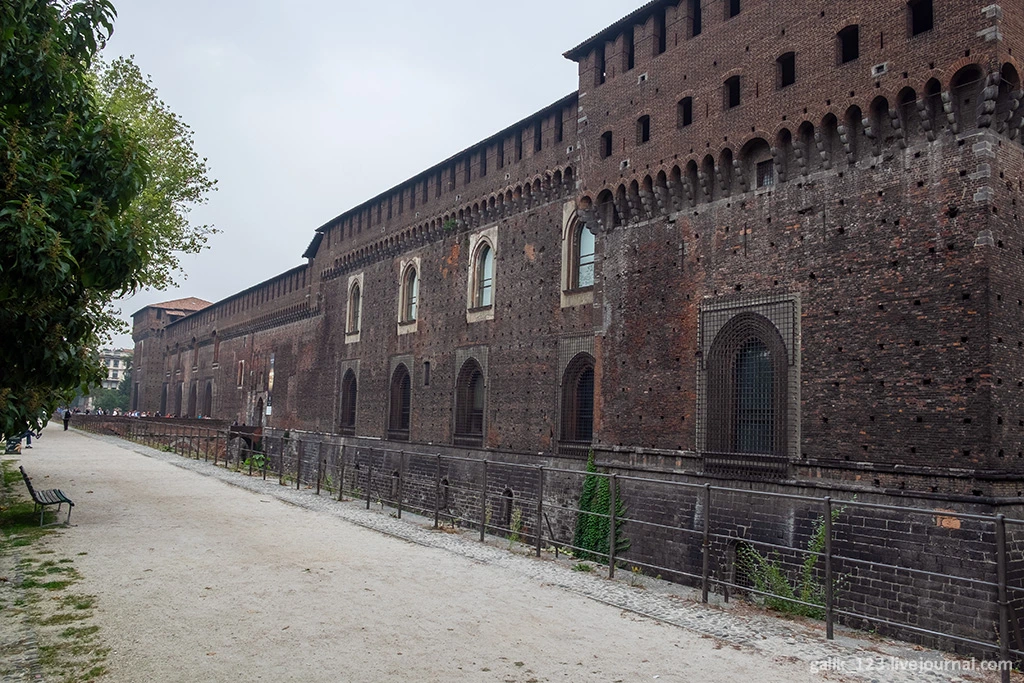
32.
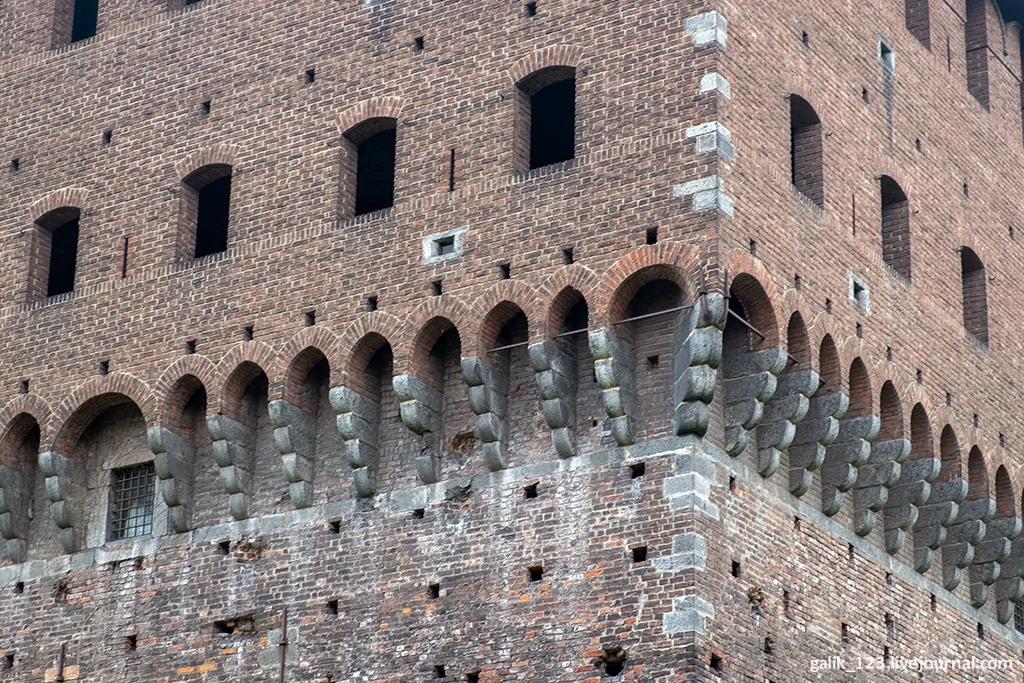
33. The rear facade of the Castle is the oldest, and corresponds to the structure of the XIV century, erected by Galeazzo Visconti. Here are some of the four gates of the castle. Bridge Gate Bridge is named Ludovico il Moro, and leads directly to the Sempione Park.
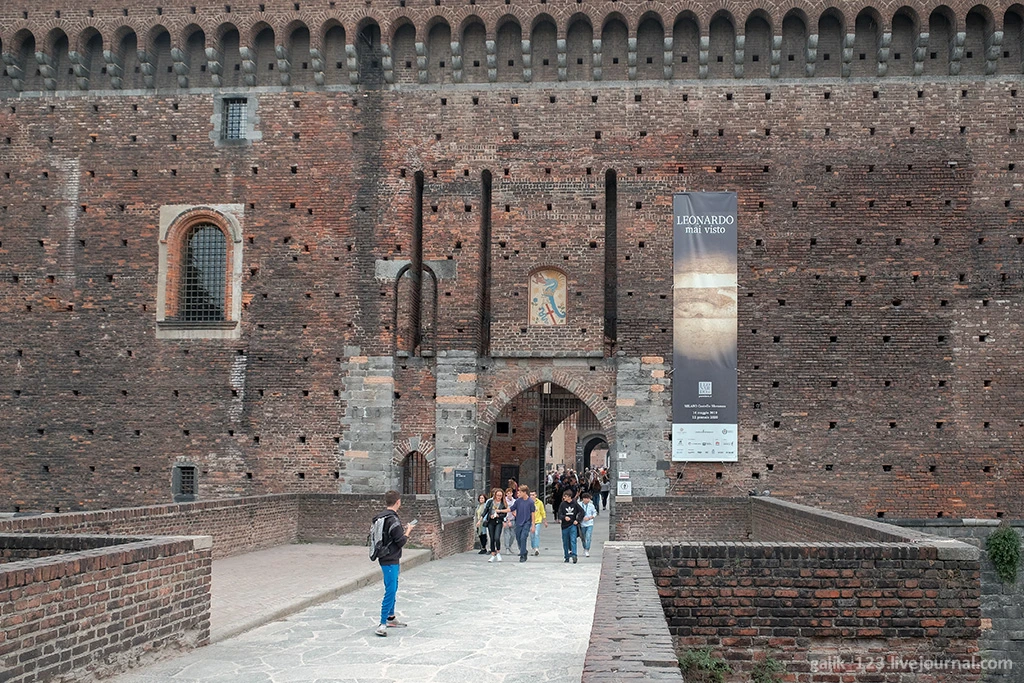
34.
